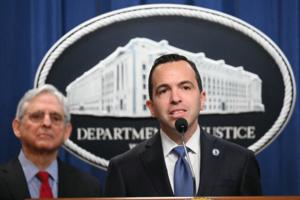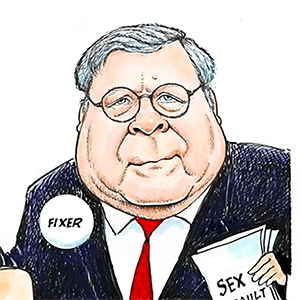Health Advice
/Health

Georgia becomes focus of maternal health discussion with visit from Biden administration
ATLANTA — The Biden administration is confronting the country’s worsening maternal mortality rate with visits to multiple states, including Georgia on Monday, to focus attention on women’s access to health care.
The visit to Atlanta is part of a year-long initiative launched in January to expand the federal government’s work to address ...Read more

Know the signs of irritable bowel syndrome
April is IBS Awareness Month, which makes this a good time to learn about the symptoms of irritable bowel syndrome, or IBS.
Research suggests that about 12% of people in the U.S. have irritable bowel syndrome, and it's more common among women than men and in people younger than 50, according to the National Institute of Diabetes and Digestive ...Read more

Recognizing symptoms of Parkinson's disease
April is Parkinson's Disease Awareness Month, which make this a good time to learn about the symptoms of Parkinson's disease.
An estimated 1 million people in the U.S. and more than 10 million people worldwide are living with Parkinson's disease, according to the American Parkinson Disease Association.
Parkinson's disease is a progressive ...Read more

Cancer cases in younger people are on the rise
ATLANTA — In the United States this year alone, there will be an anticipated 2,001,140 new cancer cases — leading to an estimated 611,720 related deaths. That’s 5,480 new cases and 1,680 deaths every day. And, according to a recent CNN report, cancer cases among younger people are rising sharply.
The American Cancer Society reported ...Read more

How worrying is bird flu's jump to dairy cows? Here's what experts say
ATLANTA -- Since 2022, a highly contagious strain of bird flu has spread across the U.S. at an unprecedented rate, resulting in the deaths of more than 90 million birds in commercial and backyard poultry flocks, plus thousands more in the wild.
Then, in late March, the virus made a jump to another species that surprised many scientists: cows.
...Read more

TikTok to crack down on content that promotes disordered eating and dangerous weight-loss habits
Saying it does not want to promote negative body comparisons, TikTok is cracking down on posts about disordered eating, dangerous weight-loss habits and potentially harmful weight-management products.
The wildly popular social media app updated its community guidelines last week, introducing a slate of new rules that it hopes will make the ...Read more

Holdout states consider expanding Medicaid -- with work requirements
In Humphreys County, Mississippi — about 70 miles north of the state capital, in the heart of the fertile Delta region — a third of the residents live in poverty. In Belzoni, the county seat, there are just a handful of health care clinics. The town’s only major hospital closed more than a decade ago, around the same time its catfish ...Read more

He thinks his wife died in an understaffed hospital. Now he's trying to change the industry
For the past year, police Detective Tim Lillard has spent most of his waking hours unofficially investigating his wife’s death.
The question has never been exactly how Ann Picha-Lillard died on Nov. 19, 2022: She succumbed to respiratory failure after an infection put too much strain on her weakened lungs. She was 65.
For Tim Lillard, the ...Read more

Rural jails turn to community health workers to help the newly released succeed
MANTI, Utah — Garrett Clark estimates he has spent about six years in the Sanpete County Jail, a plain concrete building perched on a dusty hill just outside this small, rural town where he grew up.
He blames his addiction. He started using in middle school, and by the time he was an adult he was addicted to meth and heroin. At various points...Read more

Want to lower your dementia risk? Becoming a teacher is a good start
From your 30s to well into your 60s, a new study proposes working a mentally challenging job can pay off in more ways than one. It can even help maintain your cognitive health while preventing dementia later in life.
“Our results show the value of having an occupation that requires more complex thinking as a way to maintain memory and ...Read more

FTC chief says tech advancements risk health care price fixing
New technologies are making it easier for companies to fix prices and discriminate against individual consumers, the Biden administration’s top consumer watchdog said Tuesday.
Algorithms make it possible for companies to fix prices without explicitly coordinating with one another, posing a new test for regulators policing the market, said ...Read more

Do implicit bias trainings on race improve health care? Not yet – but incorporating the latest science can help hospitals treat all patients equitably
There is increasing evidence that implicit bias – non-conscious attitudes toward specific groups – is a source of racial inequities in certain aspects of health care, and lawmakers are taking note.
Since the tragic murder of George Floyd in May 2020, wherein a Black man was killed by police, several U.S. federal and state ...Read more

Nearsightedness is at epidemic levels – and the problem begins in childhood
Myopia, or the need for corrected vision to focus or see objects at a distance, has become a lot more common in recent decades. Some even consider myopia, also known as nearsightedness, an epidemic.
Optometry researchers estimate that about half of the global population will need corrective lenses to offset myopia by 2050 if current ...Read more

Environmental Nutrition: Spotlight on supplements: Kava
Kava is a compound (extracted from a plant member of the pepper family called Piper methysticum) native to islands of the western Pacific.
Overview
The root of the plant is emulsified into a beverage or it can be dried and incorporated into dietary supplement form. Kava may also be called kava-kava, kavain, yaqona, and more.
Historically, ...Read more

What are nitrates and are they bad for your health?
Nitrates in cured meats, such as bacon, hot dogs and cold cuts, have long had a bad rap, but more recently there’s been a lot of talk about the health benefits of nitrates in beets and other vegetables. Confusing? Yes. But we’ll straighten it all out for you.
What are nitrates?
Nitrates are compounds made up of nitrogen and oxygen. Most ...Read more

Mayo Clinic Q&A: Advances in care for medication-resistant epilepsy
DEAR MAYO CLINIC: My son is in his 20s and has had epilepsy for years. He had undergone extensive evaluation over a decade ago. Lately, his medication hasn’t been effectively preventing seizures. What are some of the innovations available to provide him the chance of seizure freedom and improve his quality of life?
ANSWER: An epilepsy ...Read more

Mayo Clinic Minute: Dermatologist explains light therapy for skin
Dermatologists advise their patients to avoid harmful ultraviolet light, which can cause skin damage, photoaging and skin cancer. But they also may prescribe light therapy to treat certain skin conditions. Light therapy is a treatment that uses different wavelengths of light to treat various skin conditions.
In this Mayo Clinic Minute, Dr. Dawn...Read more

What to do when driving skills decline
This is the second half of a two-part series on making decisions about driving as we age.
It’s a simple but unfortunate fact: Driving skills can wane over time.
Eventually, driving can become unsafe for an older driver, their passengers, and others on the road. If you notice a decline in driving abilities in a loved one, or in yourself, what...Read more

Patients have a right to an observer to prevent sexual misconduct in doctors' offices, new NJ rules say
New Jersey is proposing new rules to better protect patients from sexual misconduct in doctors' offices.
The rules would require doctors to confirm that patients have read and understood their right to have another licensed medical professional present as an observer before proceeding with a sensitive examination, including breast, pelvic, ...Read more

Meningococcal disease on the rise in the US
A rise in invasive serogroup Y meningococcal disease has prompted the Centers for Disease Control and Prevention to issue a health advisory for health care providers.
"Meningococcal disease is a bacterial infection caused by Neisseria meningitidis. About 1 in 10 people are natural carriers of the bacteria, and it can spread to others by sharing...Read more
Popular Stories
- 'Miracle' weight-loss drugs could have reduced health disparities. Instead they got worse
- How worrying is bird flu's jump to dairy cows? Here's what experts say
- Cancer cases in younger people are on the rise
- Rural jails turn to community health workers to help the newly released succeed
- Cannabis legalization has led to a boom in potent forms of the drug that present new hazards for adolescents





